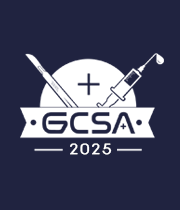Title : Early ileocecal resection in the treatment of stricturing crohns disease
Abstract:
Introduction: Despite the increase in the incidence and prevalence of Crohn's disease, there are no options for a radical cure, and treatment remains quite complicated. The introduction and widespread use of biologics initially showed promising results with a decrease in the proportion of surgical interventions in the treatment of IBD, in particular Crohn's disease, but long-term results showed the opposite - an increase in the frequency of surgical complications in the so-called "overtreated" group of patients. On the other hand, current research demonstrates the benefits of surgical treatment in terms of the quality of life of patients and a reduction in the need for immunosuppressive drugs in some patients. Despite a growing body of published evidence on the benefits of early surgery for Crohn's disease, recommendations and guidelines for the surgical management of patients with Crohn's disease remain unchanged. It should be noted that with the deterioration of the patient's condition and the increase in the time interval of high disease activity, the volume of surgical intervention increases, and in addition, the complexity of the operation itself increases and the frequency of postoperative complications increases.
Objective: To improve the results of treatment of patients with stricture Crohn's disease.
Methods: The study included 86 patients diagnosed with Crohn's disease who underwent ileocecal resection (ICR), thirty-one patients underwent surgery as soon as possible after diagnosis (main group), 55 patients underwent ICR after the previous drug treatment (control group). The groups were comparable in terms of age, gender, BMI and comorbidity. Most patients of the main group had a localized nature of the disease (stricture of the terminal ileum), in patients of the control group, multiple localization of the lesion was more often observed: the initial sections of the gastrointestinal tract (27% vs. 15%, p = 0.02), perianal manifestations (29% vs. 13 %, p=0.03). The average time interval from diagnosis to surgical treatment in patients of the main group was 14.5 months, in patients of the control group - 82.6 months, p=0.001.
Results: The frequency of urgent surgical interventions in the main group was significantly higher (16% vs. 5.4%, p=0.017). Patients who received anti-inflammatory drugs and immunodepressants before surgery were more likely to undergo open interventions (61.8% vs. 29%, p=0.007). The frequency of temporary stoma formation was comparable in both groups (6.4% vs. 5.4%, p=0.1). There was no statistical difference in the incidence of anastomotic leakage (0% versus 1.8%, p=0.07), similarly, there were no differences in the incidence of obstruction in the postoperative period, the frequency of purulent-septic complications and the length of stay in the hospital. in patients who underwent primary resection, there were significantly more cases of perianal manifestations of the disease, which can be explained primarily by long-term treatment with immunodepressants in patients of the control group both at the preoperative stage and after surgery (83% vs. 31%, p = 0.001), as well as a shorter interval before initiation of drug therapy after ICR (1 versus 14 months, p=0.002). There was an increase in the rate of drug therapy escalation in the late ICR group over 2 years (3.2% vs. 16.3%, p=0.001), mainly due to an increase in corticosteroid requirements (13% vs. 0.005).
Conclusion: Early ileocecal resection is the operation of choice in patients with localized stricture Crohn's disease, which leads to a decrease in the need for immunosuppressive drugs after surgery, as well as reduces the incidence of postoperative complications and increases the time to the development of disease recurrence.


